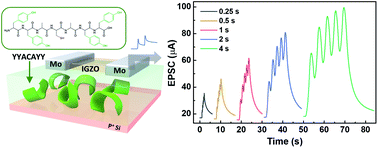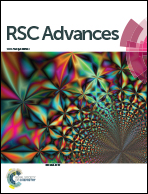Synaptic transistors based on a tyrosine-rich peptide for neuromorphic computing†
Abstract
In this article, we propose an artificial synaptic device based on a proton-conducting peptide material. By using the redox-active property of tyrosine, the Tyr–Tyr–Ala–Cys–Ala–Tyr–Tyr peptide film was utilized as a gate insulator that shows synaptic plasticity owing to the formation of proton electric double layers. The ion gating effects on the transfer characteristics and temporal current responses are shown. Further, timing-dependent responses, including paired-pulse facilitation, synaptic potentiation, and transition from short-term plasticity to long-term plasticity, have been demonstrated for the electrical emulation of biological synapses in the human brain. Herein, we provide a novel material platform that is bio-inspired and biocompatible for use in brain-mimetic electronic devices.



 Please wait while we load your content...
Please wait while we load your content...